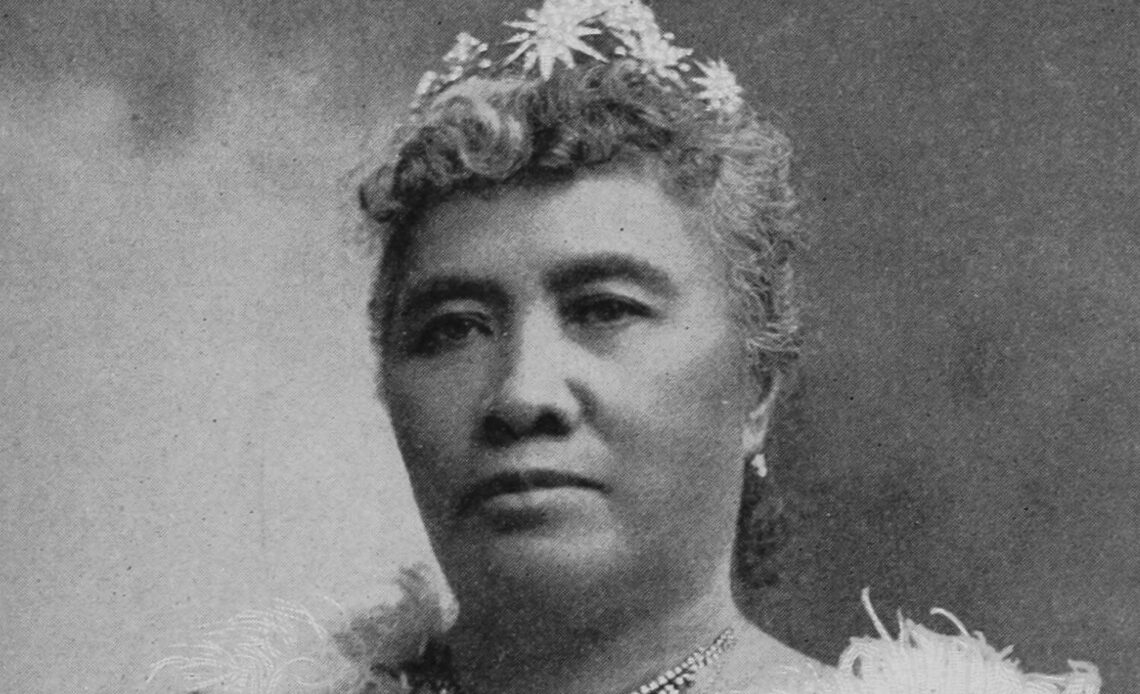
We know the American state of Hawaii as a tropical paradise with beautiful beaches and the original home of surfing. Less known is that Hawaii was, for nearly 100 years, an independent kingdom. United in 1795 by its first monarch, King Kamehameha I, known as “The Great”. There were eight monarchs until the Kingdom’s overthrow in 1893 – the last monarch being its only reigning queen – Liliuokalani.
She was born Lydia Liliu Loloku Walania Kamakaeha on 2 September 1838 in Honolulu. Her mother, Analea Keohokalole and her father, Caesar Kapaakea were members of the Hawaiian nobility and were collateral relations of the Royal House of Kamehameha. King Kamehameha III recognised Liliuokalani and her siblings as heirs to the Hawaiian throne, and at the age of four, she was sent to study with other recognised royal heirs at the Chief’s Children’s School.
Upon the ascension of King Kamehameha IV in 1855, she became part of the young social elite and served as Lady in Waiting to his wife, Queen Emma. After a broken engagement, she met and fell in love with American-born John Owen Dominus, and the couple were married on 16 September 1862. They had no children of their own, but Liliuokalani informally adopted three children in a common Hawaiian practice called Hanai.
On the death of King Kamehameha V in 1872, the royal line died out, and it was decided future monarchs would be chosen from among the Royal Family by the legislature. Lunalilo – a grandnephew of King Kamehameha I – was chosen; however, his reign would be brief as he died from tuberculosis in 1874. The next selected was Liliuokalani’s brother, David Kalakaua. He and his queen, Kapiolani had no children, and after the death of his only brother in 1877, he named Liliuokalani as his heir.
In 1881, King Kalakaua embarked on a world tour, and during that time, Liliuokalani served as regent. She had to deal with a smallpox outbreak – most likely brought to the islands by contracted Chinese labourers. She closed all the ports and stopped all outgoing shipping containing the outbreak to Honolulu and Oahu. It mainly affected native Hawaiians with 789 infections and 289 fatalities. That year, she visited the leper colony on Molokai – a visit which deeply affected her. She would go on to organise the building of a hospital for the lepers, and she awarded a knighthood to Father Damien, a Catholic priest who ministered to the lepers, for services to her people.
In 1887, she and Queen Kapiolani represented Hawaii at the Golden Jubilee celebrations for Queen Victoria. In their absence, a rebellion against her brother was organised by a group of businessmen of European and American origins. They sought to end the monarchy and seek the annexation of Hawaii by America; however, after the King agreed to a constitution they had drawn up, they allowed the monarchy to continue. The constitution was known as “The Bayonet Constitution” because it had been signed by threats to the King. It greatly reduced the monarch’s powers and disenfranchised two-thirds of the native Hawaiians.
On 29 January 1891, Liliuokalani came to the throne after the death of her brother. She created her husband Prince Consort and Governor of Oahu; however, he died on 27 August, seven months into her reign, which left her without an important advisor. She named her niece, Princess Kaiulani as her heir. From April to July, she toured all the main Hawaiian Islands. She sought after receiving many petitions to write a new constitution which would restore many of her powers and the rights of native Hawaiians. The same group of businessmen got word of this and made a move against the monarchy. On 17 January 1893, they deposed Queen Liliuokalani. An American warship, the USS Boston, had landed in Honolulu leaving the Queen unable to defend herself.
In the following five years, Queen Liliuokalani sought the help of America to restore her to her throne, but ultimately what the leaders of the coup against her wanted was fulfilled in 1898 when America annexed Hawaii. Liliuokalani lived out her remaining years at her private residence “Washington Place” in Honolulu. She died on 11 November 1917, aged 79, and a full state funeral was held for her at her former royal residence Iolani Palace. Many native Hawaiians came out to mourn their last Queen.
In 1993 on the 100th anniversary of the end of the monarchy, US President Bill Clinton issued an apology to native Hawaiians for America’s role in ending their monarchy. After many different uses, the former royal residence Iolani Palace was fully restored and opened as a museum to remember Hawaii’s time as a kingdom. Hawaiians will always have a special place in their memory for the remarkable and courageous women who was their Queen.

